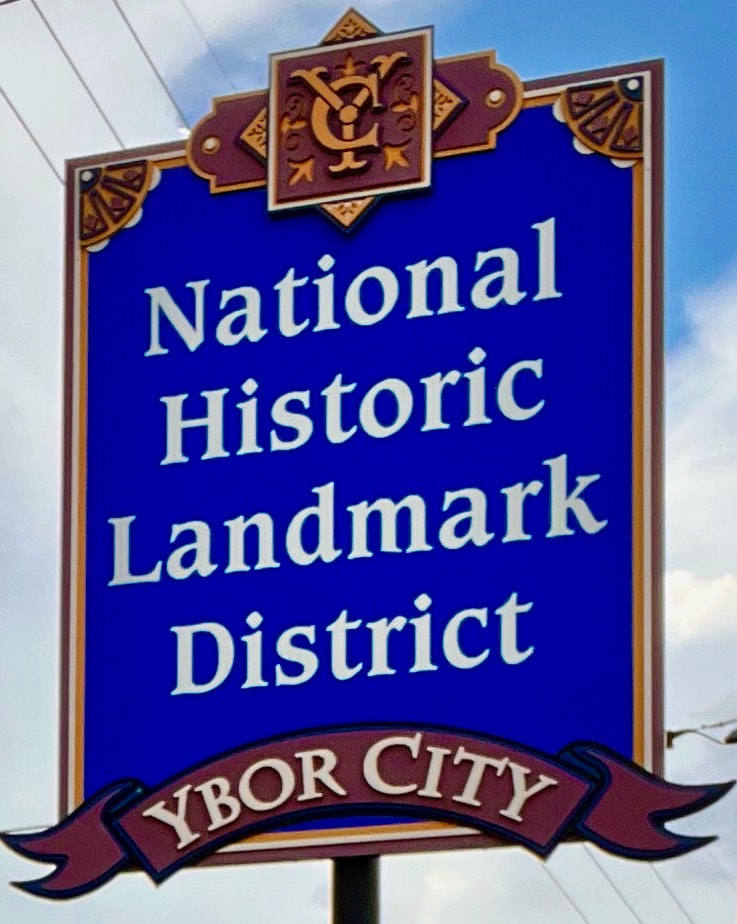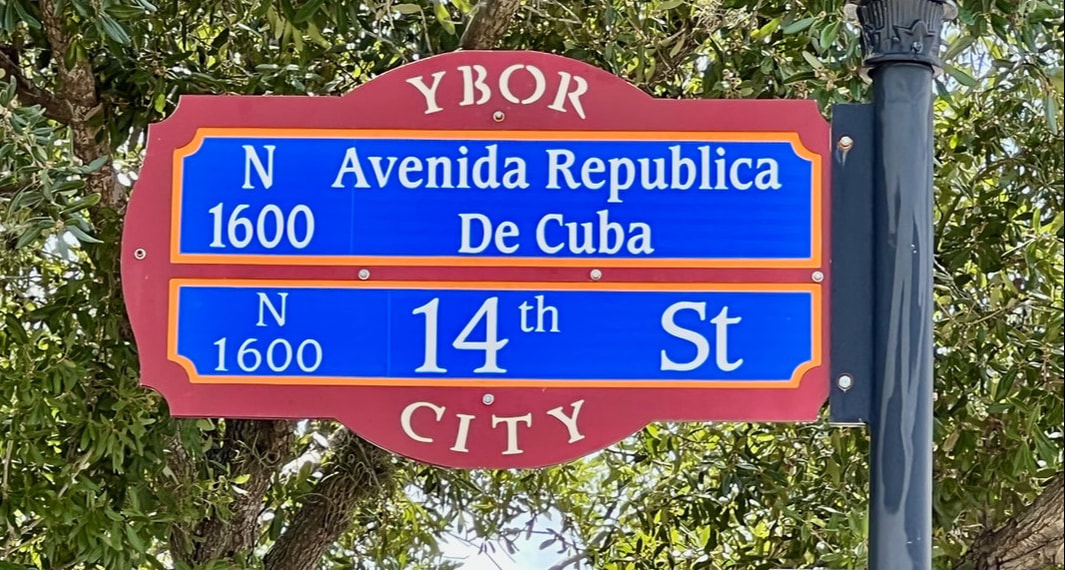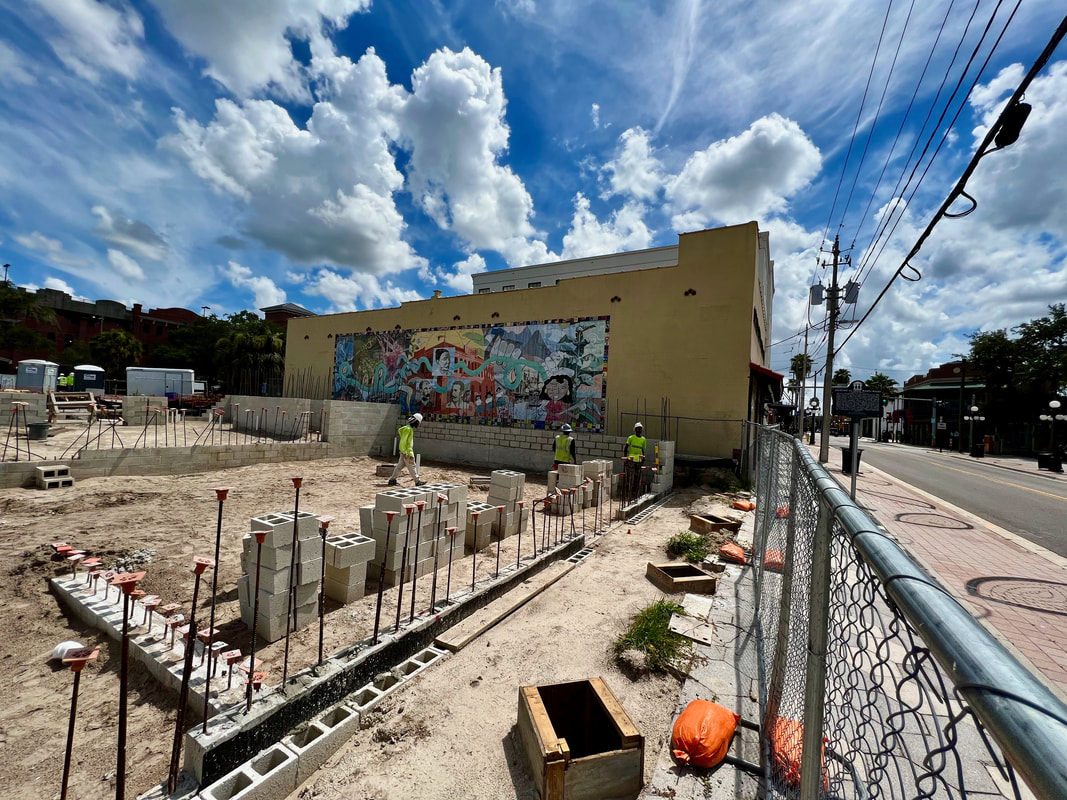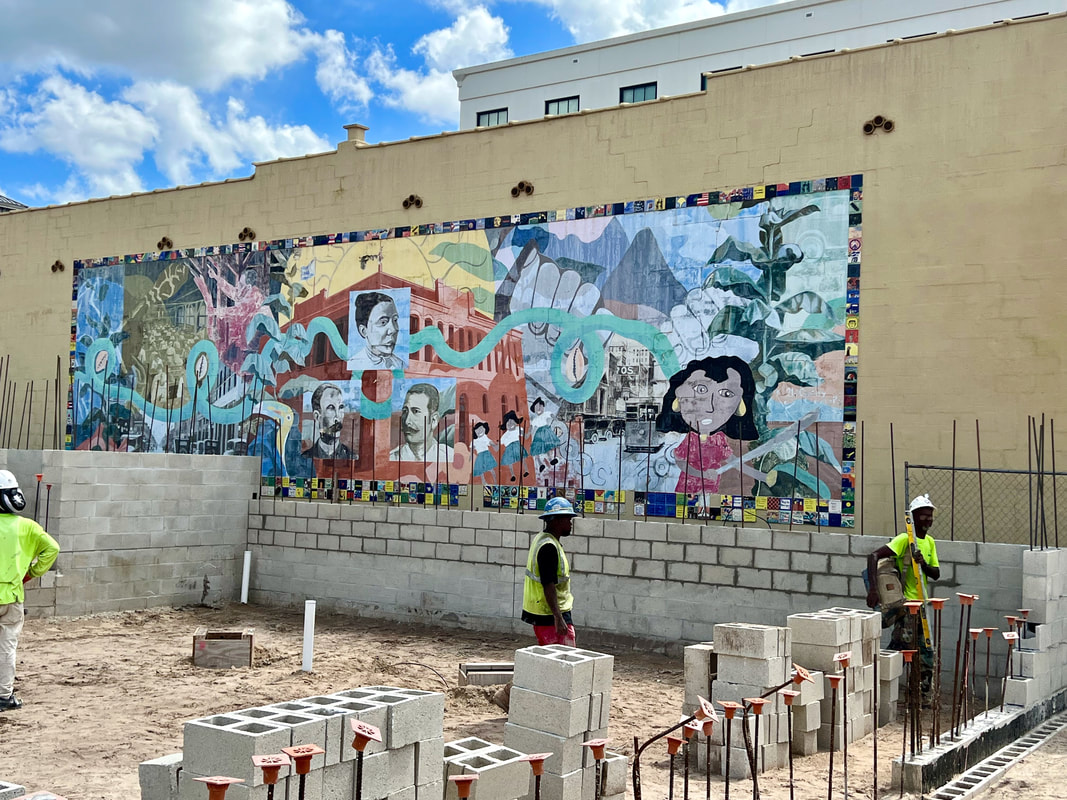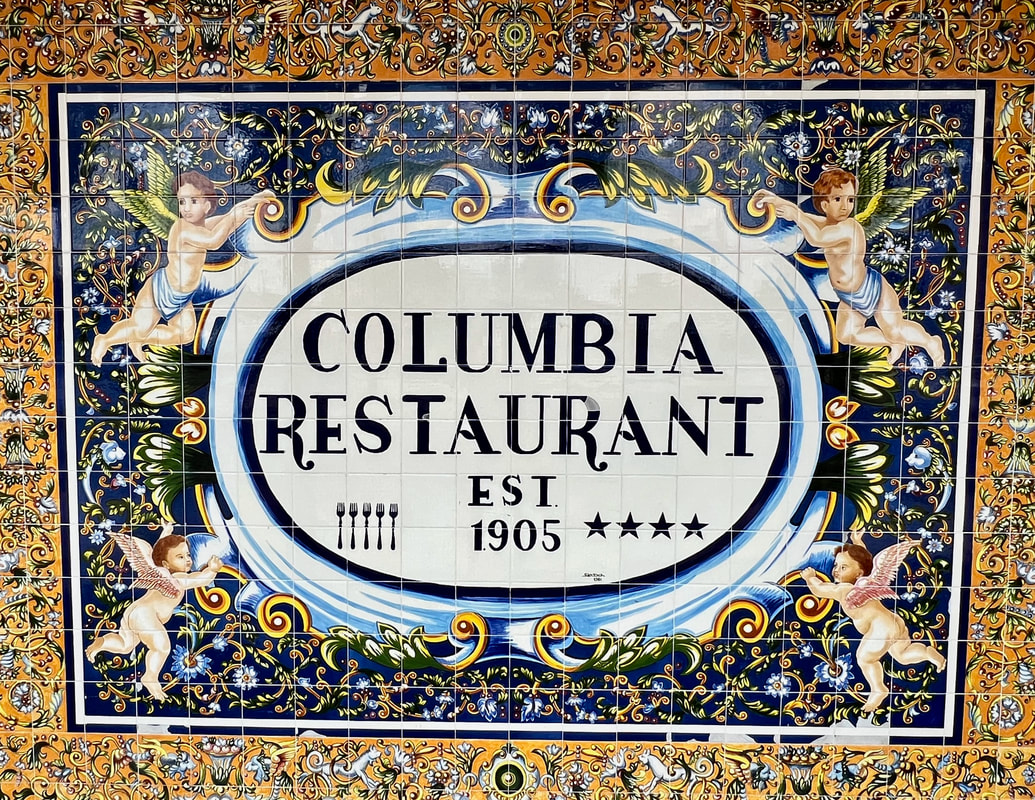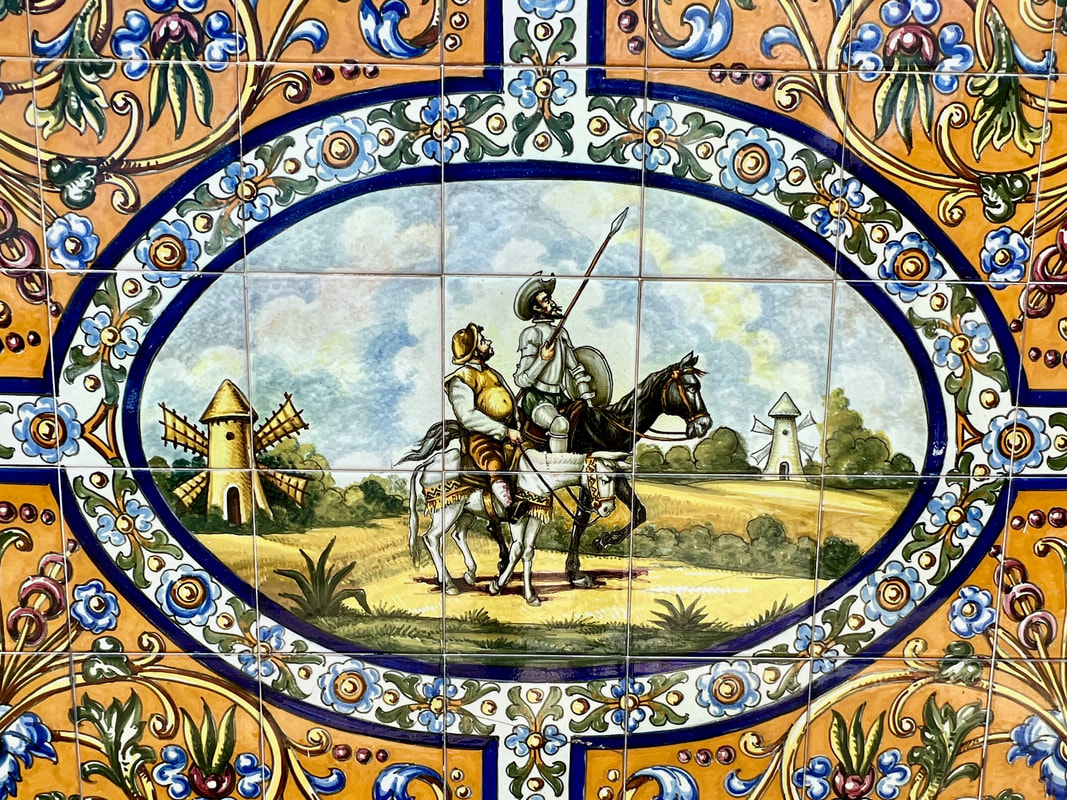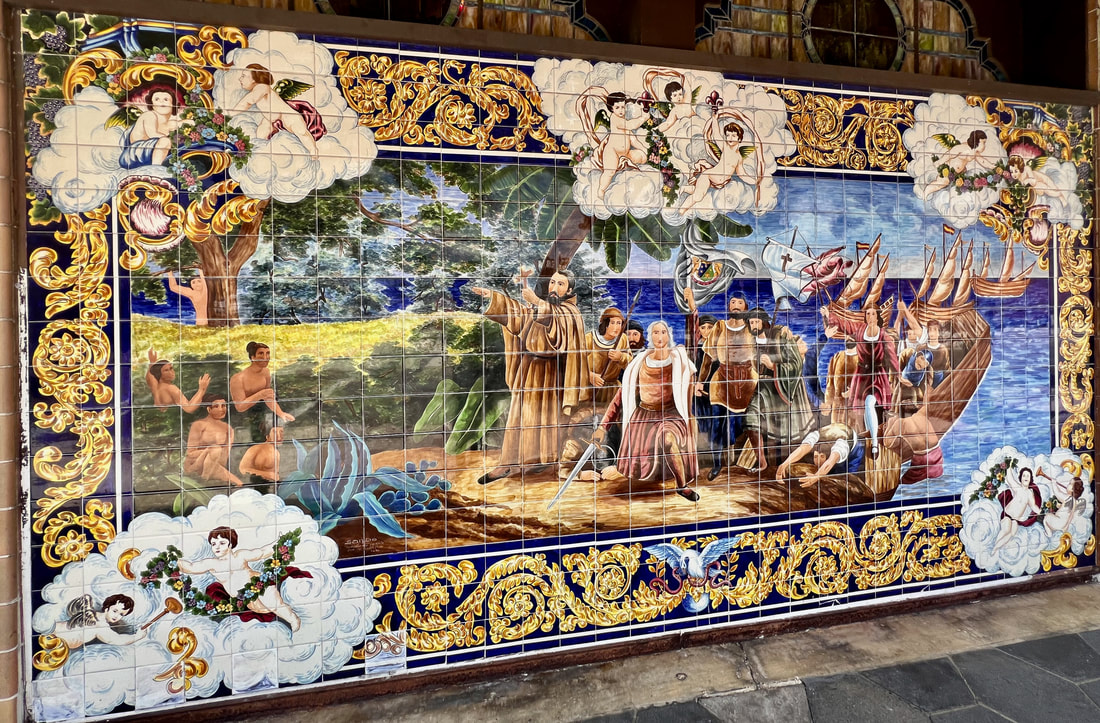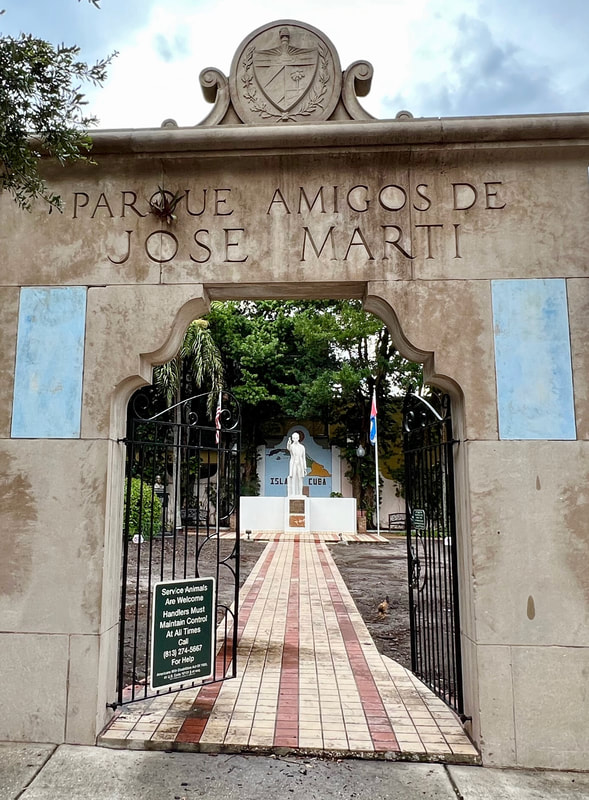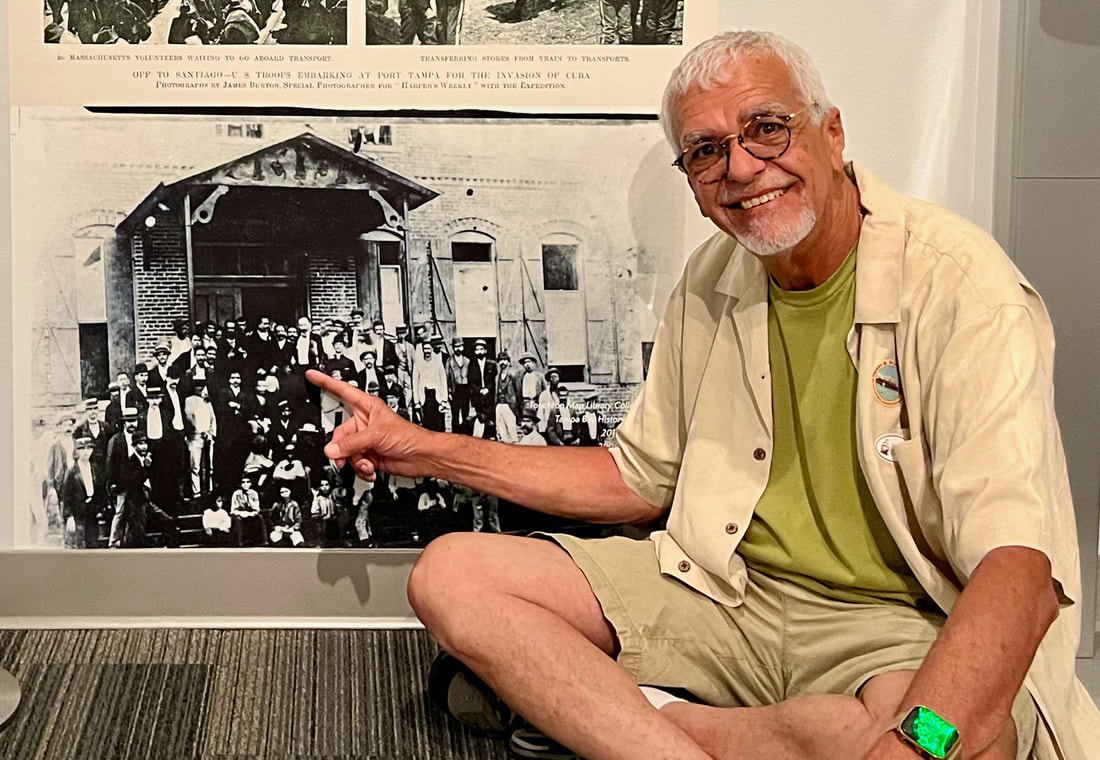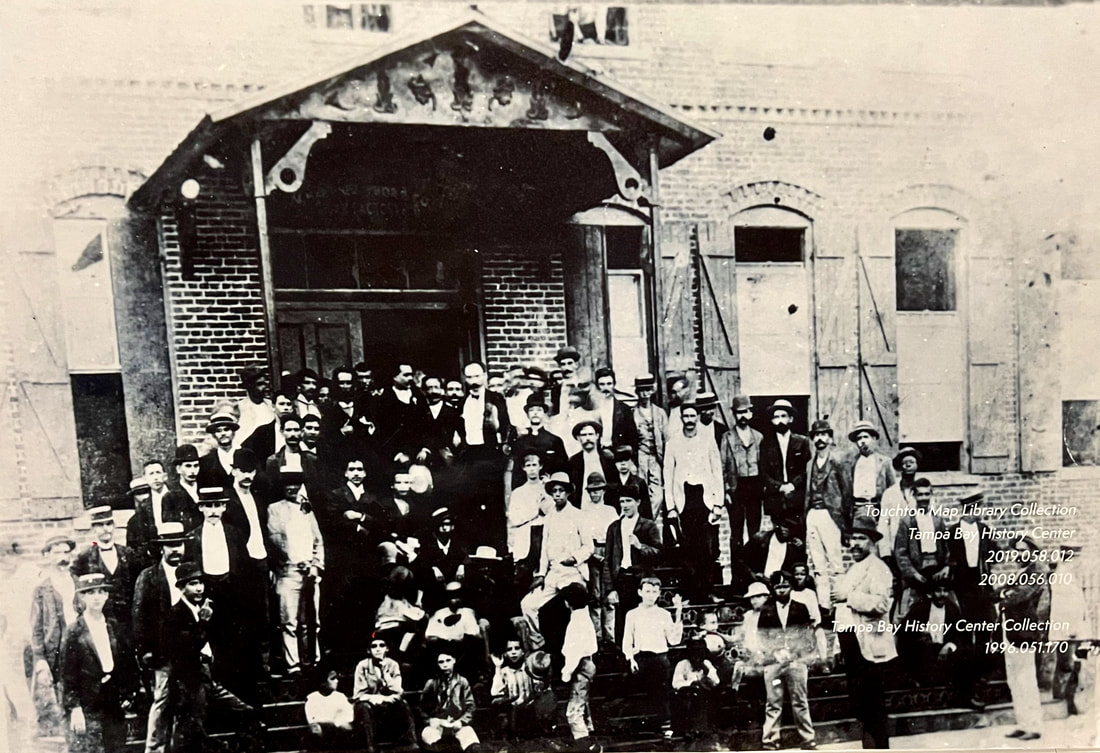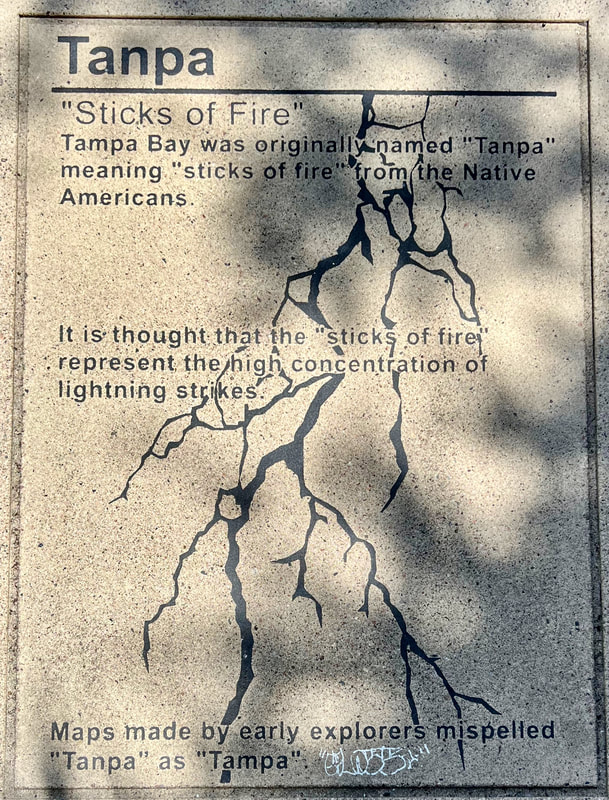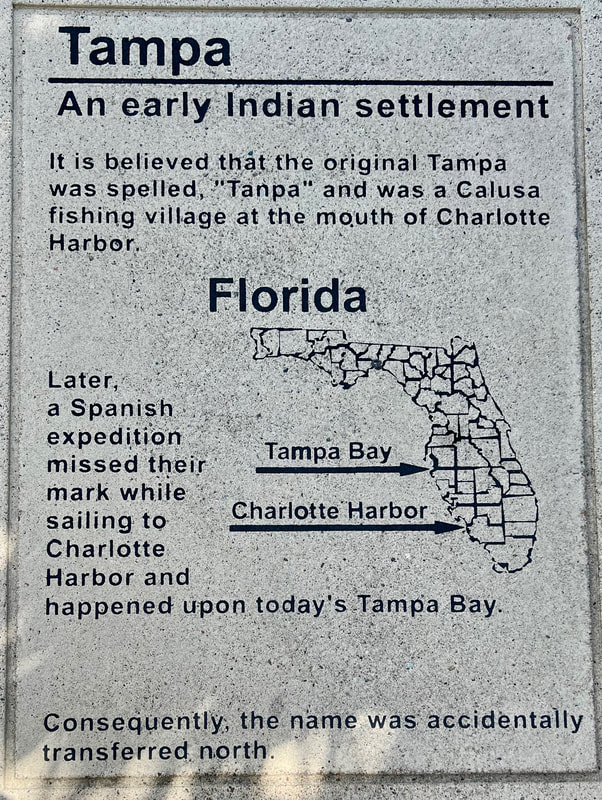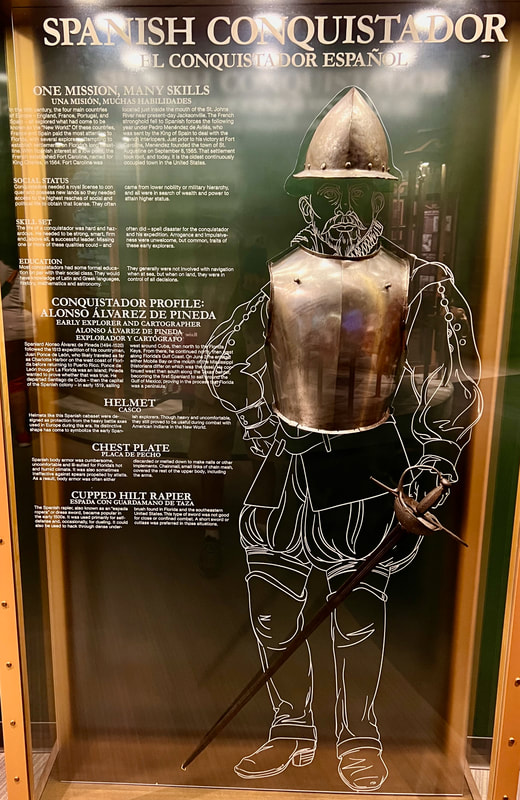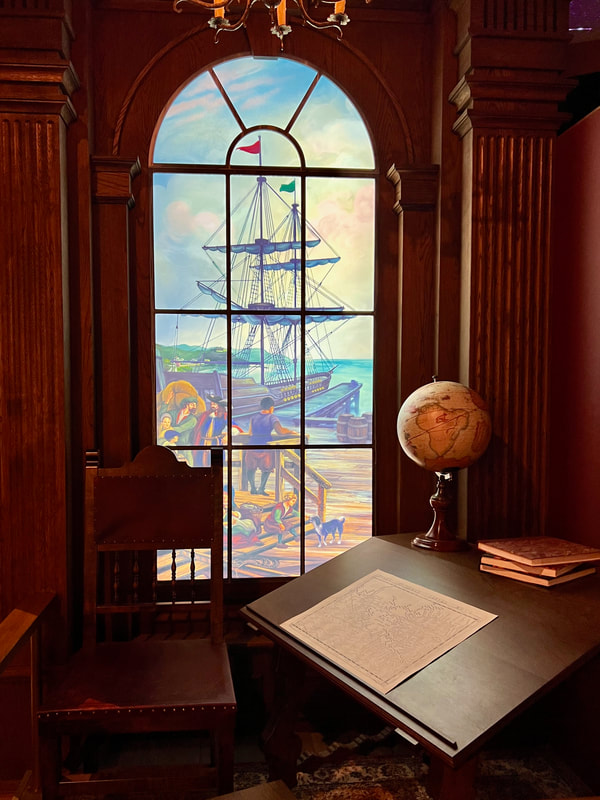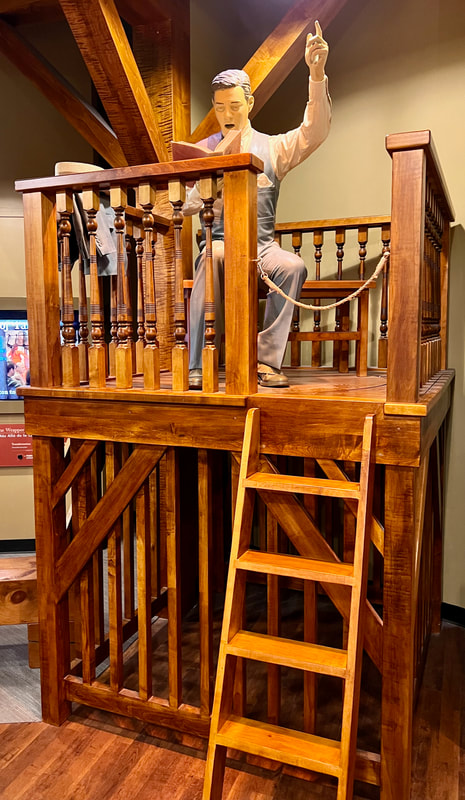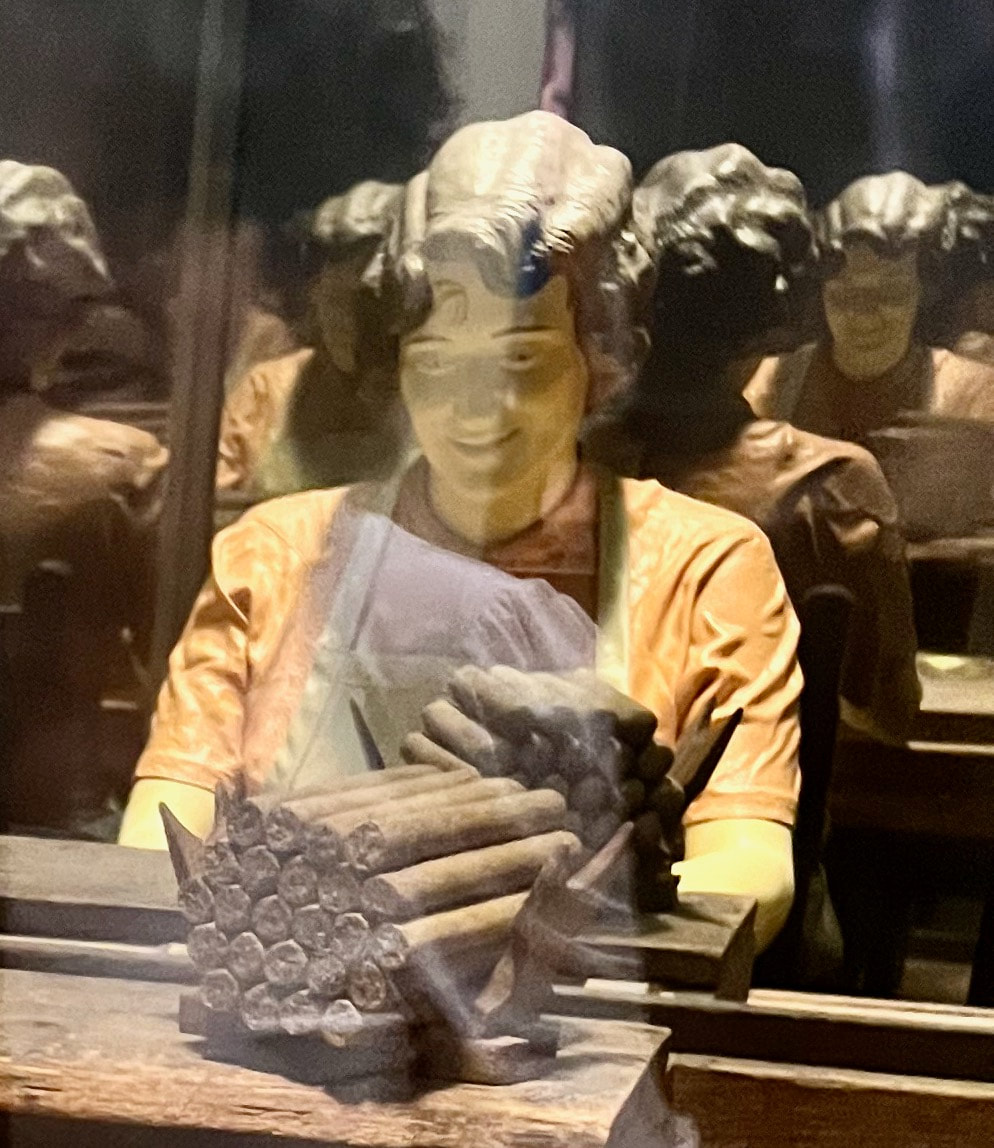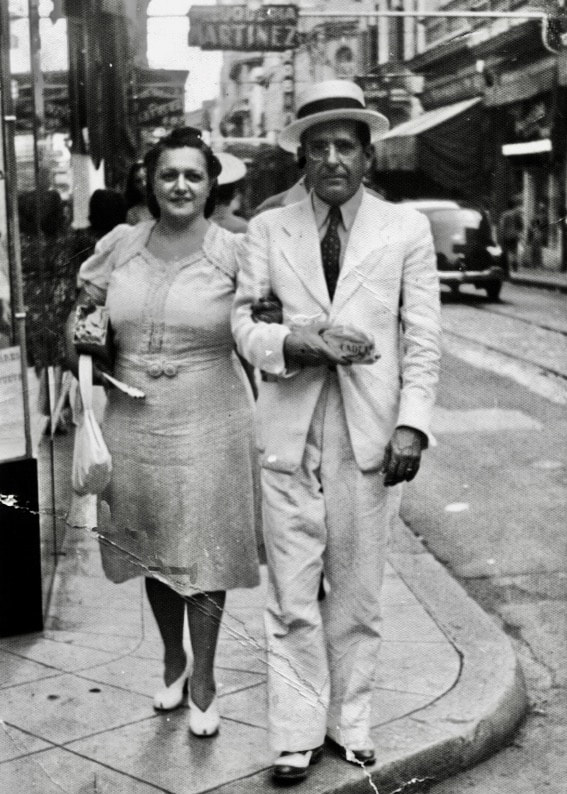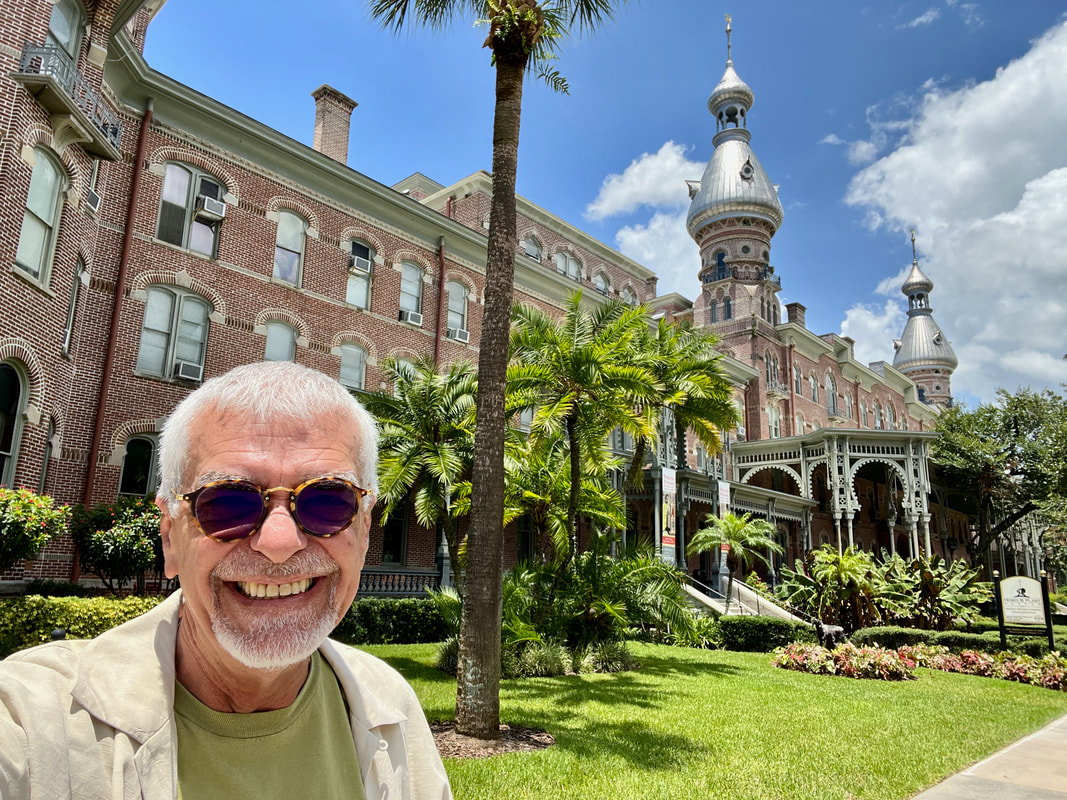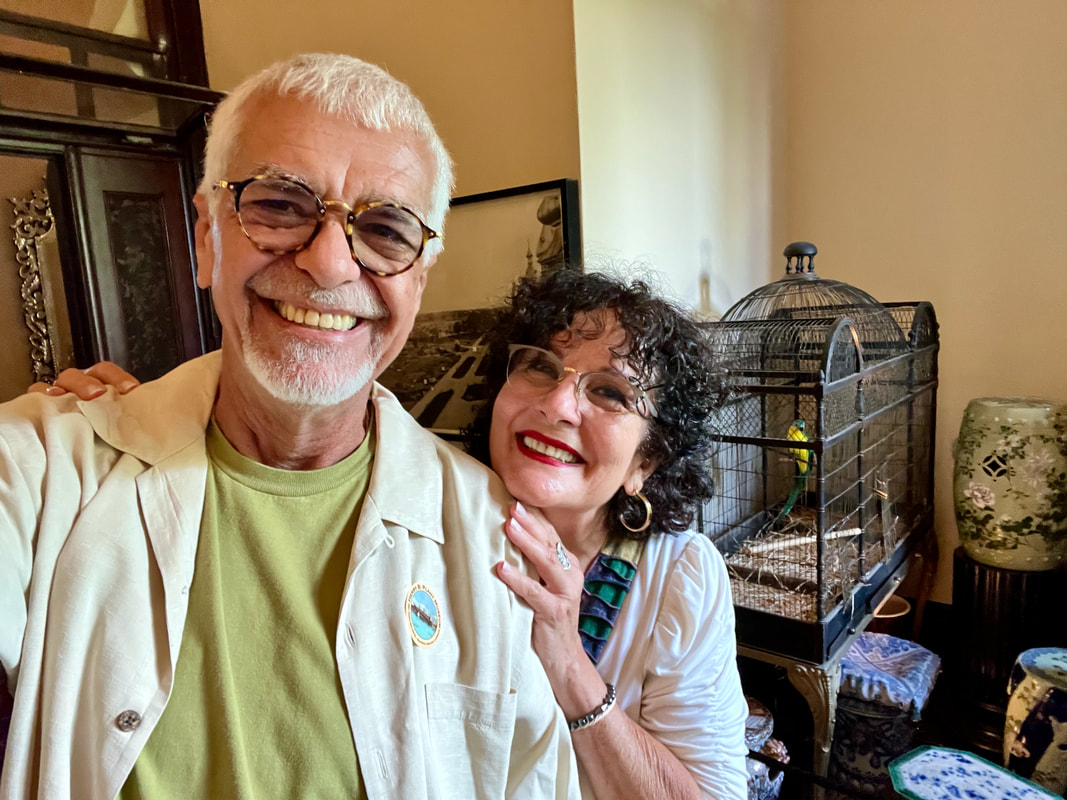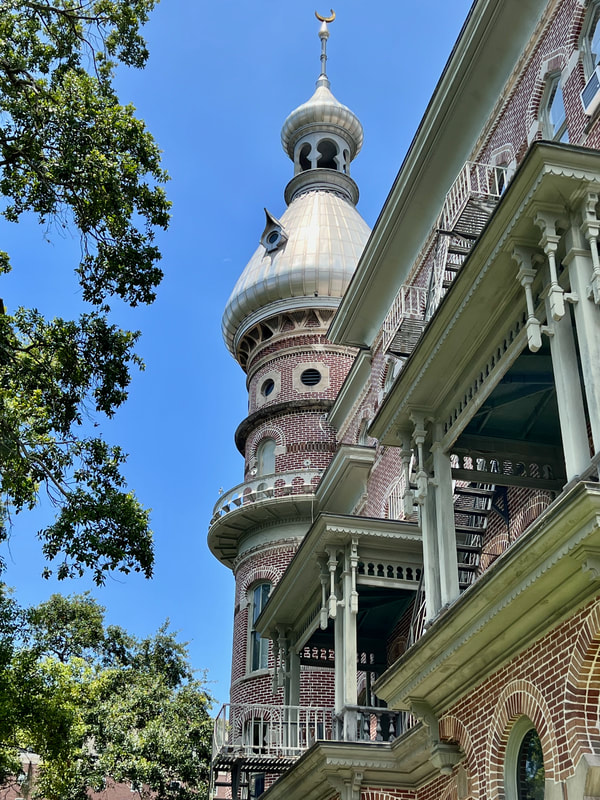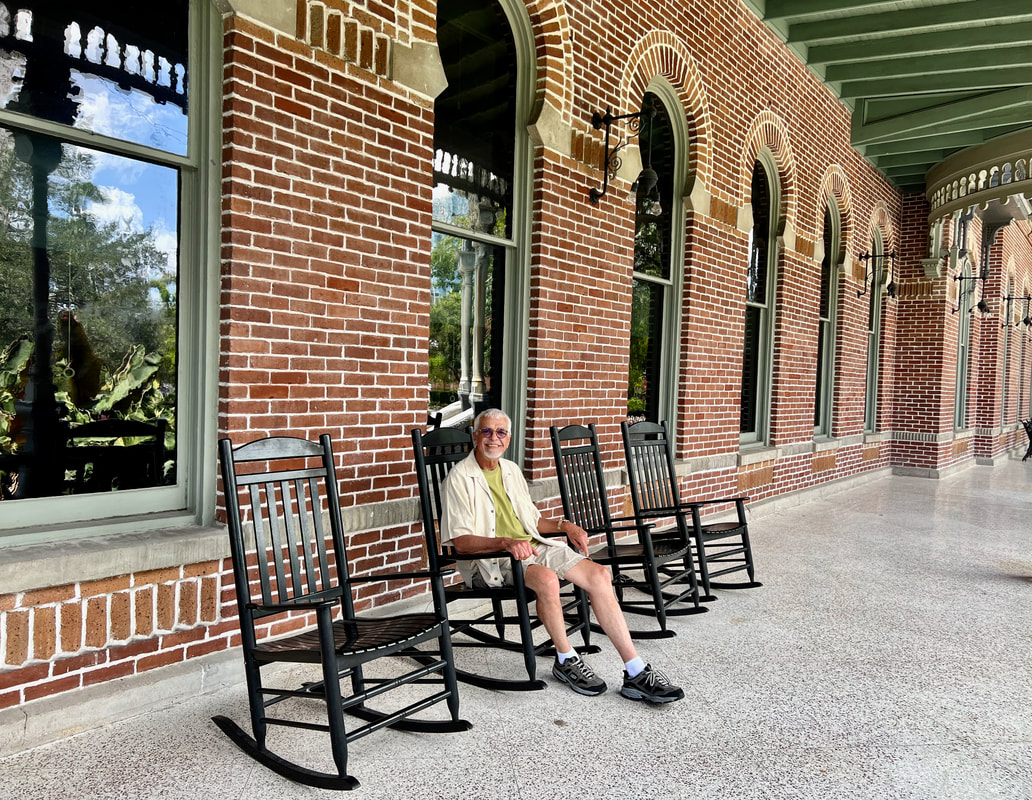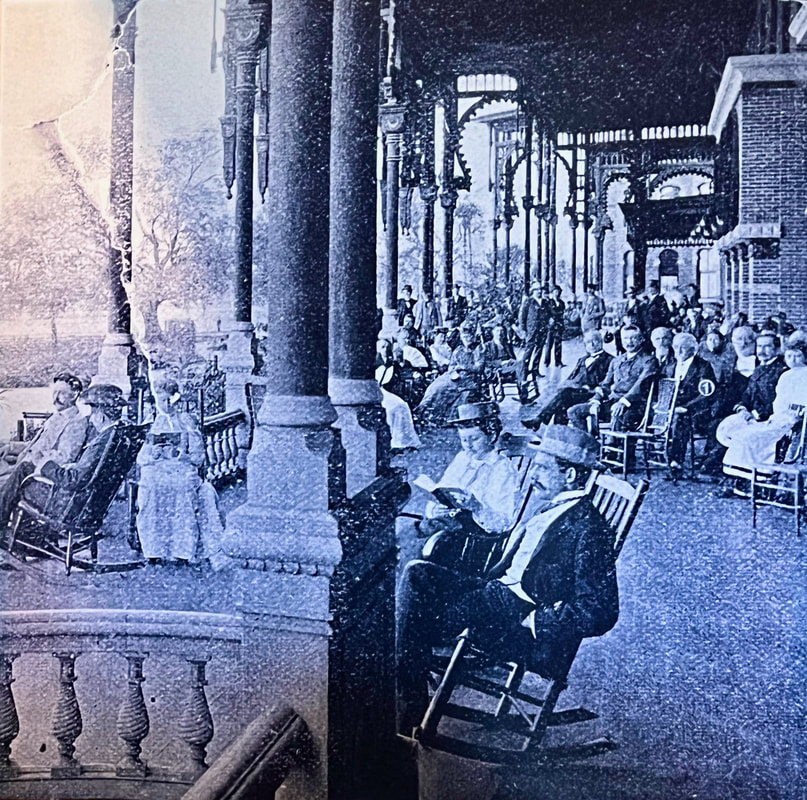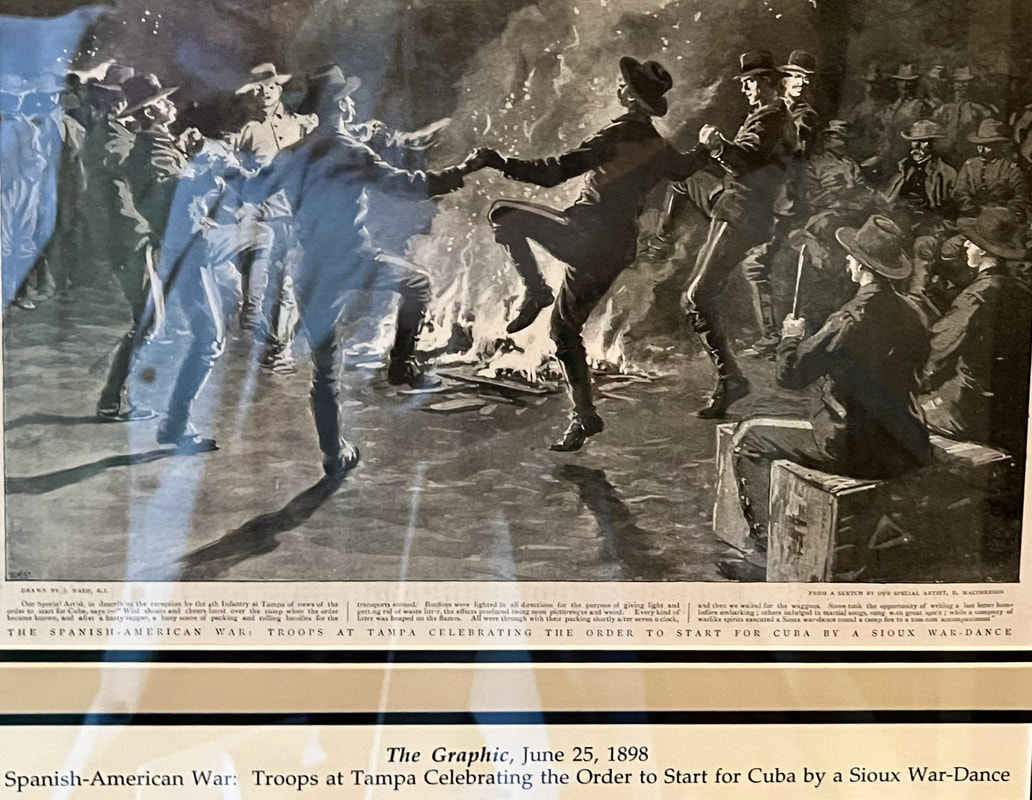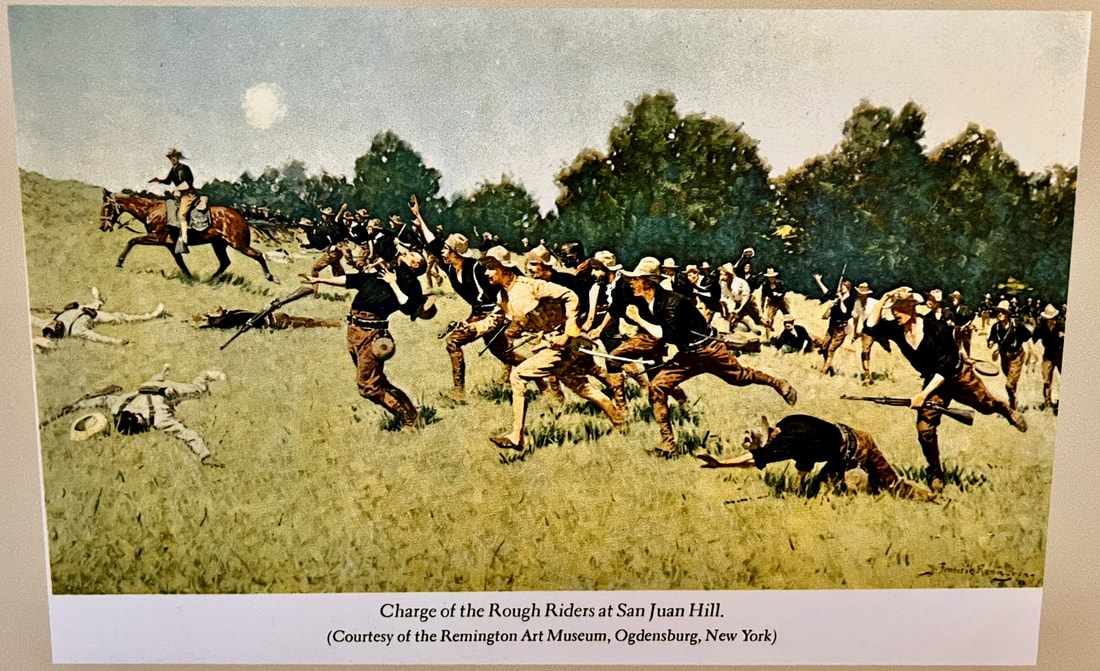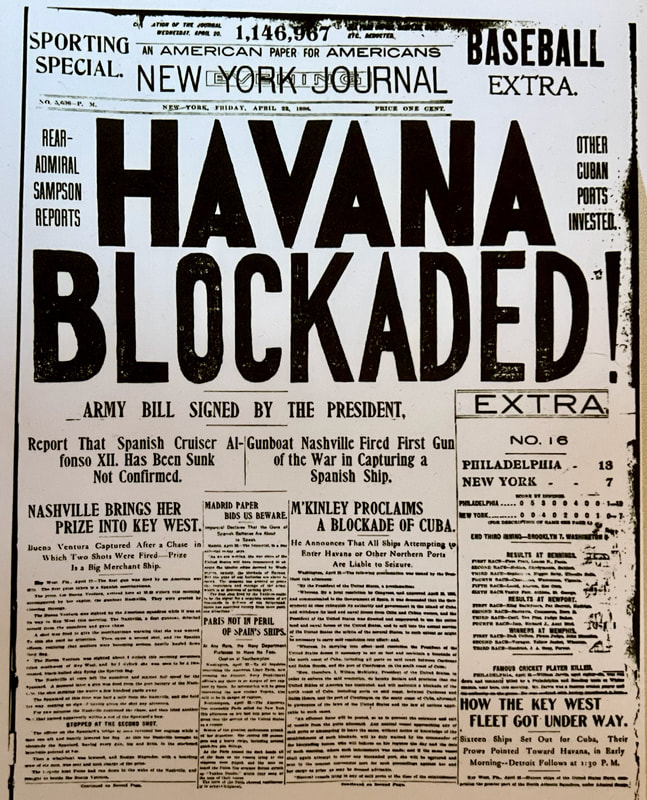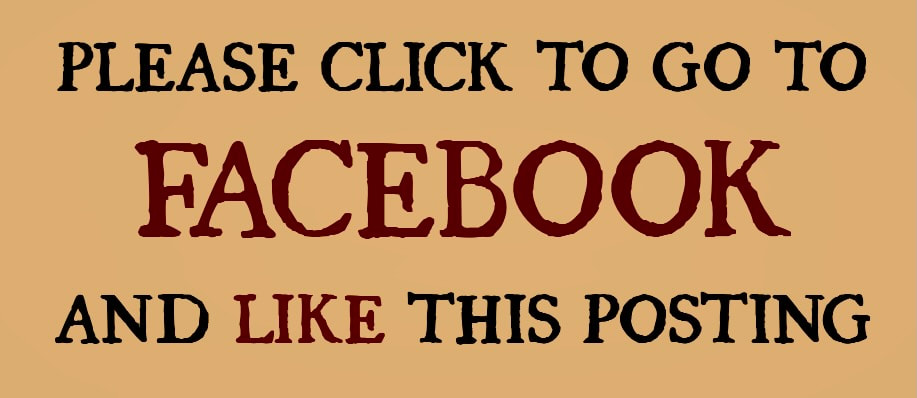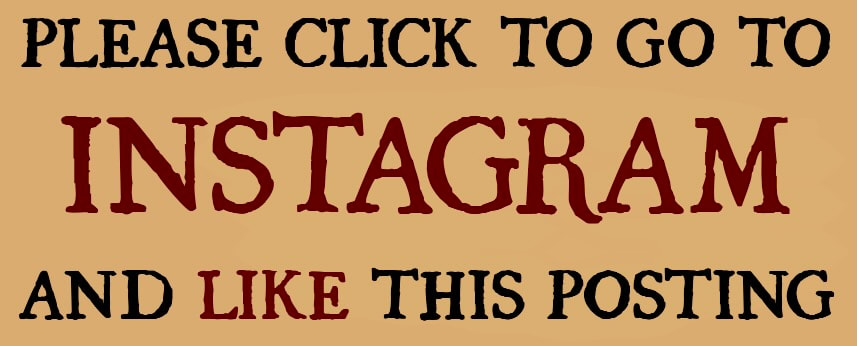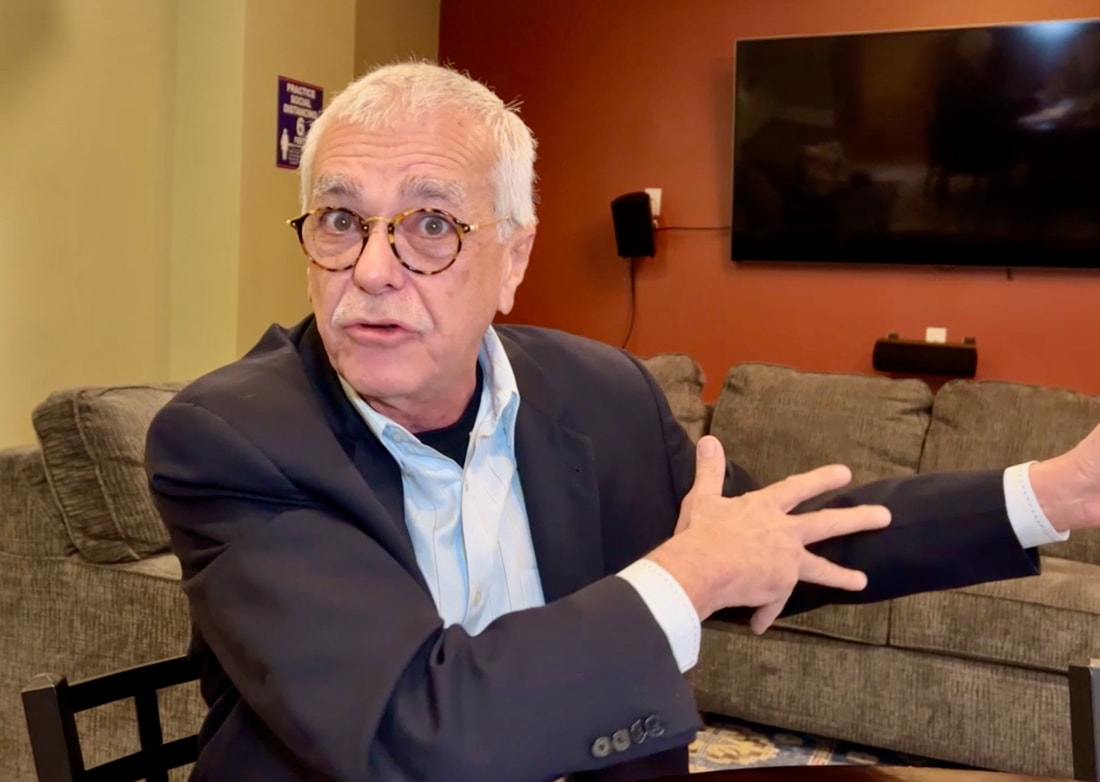SPANISH-CUBAN-AMERICAN HISTORY
IS ALIVE AND WELL IN TAMPA
|
|
Part 1 Ybor City: The 'Little Havana'
|
|
To enlarge these images, click on them! --->
|
But it was also "The Cradle of Cuban Liberty." It was also the mecca for Cuban exiles when they organized to fight for Cuba's independence from Spain. This is where José Martí organized the Cuban Revolutionary Party. This is where there was an attempt on his life!
The Ybor City Historic District, declared a National Historic Landmark, "includes more than 1,300 buildings, nearly a thousand of which are historic," according to the sign at the main entrance. And throughout this district, there are numerous historic markers telling its story. "Late 19th and early 20th century Cuban immigration to the United States was impressive for the craft talents brought to the country," a historic marker explains. "Along with their Spanish counterparts, skilled Cuban cigarmakers made Tampa's hand-rolled cigars world famous." |
|
Another marker explains that by the end of its first year, Tampa's first cigar factory was producing 500,000 hand rolled cigars per month. "This world famous cigar center gave Tampa its rich and exotic Latin Heritage," yet another marker proclaims.
As you walk around Ybor City, historical markers teach you fascinating lessons. There is a marker about the attempt to poison Martí and another marker about Ruperto and Paulina Pedroso, the couple who gave him refuge. There is even a marker about dueling in the early years of Ybor City, explaining how men "sometimes fought over honor, women, and at least once over an argument regarding which novel was appropriate to be read by the lector of a cigar factory." Another sign marks the spot where Col. Teddy Roosevelt and his "Rough Riders" watered their horses during the Spanish-American War. And another marker covers Tampa's Cuban bread history, started by a Sicilian, and explains that at the peak of production, 35,000 loaves of Cuban bread were produced weekly. "Tampa's Latin Loaf is like no other bread in the world," the marker adds. "It is leavened with emotion, flavored with tradition, and eaten with a large helping of nostalgia." |
|
Actually, that describes not just the bread, but how I feel about Ybor City!
Regrettably, I also saw some new construction that threatens the district's historic flavor, like a new building about to cover a colorful Hispanic mural on the side wall of a historic Afro-Cuban clubhouse. (See photos). The markers also tell you about the Cuban and Spanish social clubs which served as mutual aid societies, attending to even the educational and medical needs of their members. Each of them had their own clubhouse building, some of which are still here and considered National Historic Landmarks. And they also had the "Hotel de la Habana, for newly arrived tobacco workers and Cuban political exiles." |
|
Among the clubs here were El Centro Español de Tampa, for Spanish immigrants and other Hispanics; El Centro Asturiano de Tampa, for Spanish immigrants from Asturias; El Circulo Cubano, for Cuban immigrants; Sociedad La Union Martí-Maceo, for black and white Cubans involved in the Cuban independence movement; El Liceo Cubano, a Cuban social center where Marti delivered his two famous speeches, "Con Todos y Para Todos" and "Los Pinos Nuevos."
Although he lived in New York City and spent the last 15 years of his life writing profusely from his Greenwich apartment, Ybor City is the place where Martî came to lay the foundation for the Cuban independence realized three years after his death in 1895. New York recognizes him with a very impressive statue in Central Park. But in Ybor City, Martí is everywhere! So where is the house where Martí stayed? It's now park bearing his name. |
Part 2:
|
|
|
Needless t0 say, this place is bursting with history! The park has a statue of Martí, a bust of Cuban independence General Antonio Maceo, a modest mural-map of Cuba, and the Cuban and American flags. It is covered with soil from each of the original six Cuban provinces! At the nearby Tampa Riverwalk, where the city's most prominent citizens are recognized, there is a bust of Paulina Pedroso. The plaque below her bust describes her as a "freedom fighter" who raised money to buy munitions for the Cuban rebels. "Ostensibly a humble cigar maker, her natural political skills made her a factor in winning Cuba's independence from Spain."
The Pedroso house went through several transactions until it was purchased in the early 1950s by Cubans wishing to recognize its historic significance. When ownership was transferred to the Cuban government in 1956, at first there was talk of turning it into a museum. |
|
|
But when it was severely damaged by a fire, it was decided to turn it into a small park -- "Parque Amigos de José Martí -- dedicated to the memory of the patriot, poet, and journalist who led the island's revolution to win independence from Spain."
However, the new Cuban Revolution delayed the park's opening until 1960. Tampa city officials agreed to maintain the park's lights and irrigation, but leave the landscaping and operation responsibility to the Cuban-American community in Tampa. So, other than the Cuban embassy in Washington, D.C., this is the only Cuban territory in the United States. And for Cuban exiles like me, who for many years have longed to step on free Cuban soil again, without having to deal with communists, this is it! It was great to be there! But frankly, it was not the same as the Cuba I knew. I think I will have to wait until the rest of Cuba is free. Next: Martí's story continues, at the nearby Tampa Bay History Center. |
Part 3: Tampa Bay History Center showcases the city's unique relationship with CubaI had seen this photo before, but not large enough for me to get in it! LOL I had to sit on the floor of the Tampa Bay History Center to get in this photo, and it was worth it! I'm pointing to José Martí, the apostle of the Cuban War of Independence from Spain, as he is speaking to his followers in Ybor City, Tampa sometime in the early 1890s.
At the Tampa Bay History Center museum, visitors get an impressive lesson on the history of this city's long and unique relationship with Cuba — from the time when Cuba was a Spanish colony to today's communist dictatorship. |
|
After all, a war with two difference names — the Cuban War of Independence and the Spanish-American War — was launched from here! One exhibit here calls it "the Spanish-Cuban-American War," which is a much more accurate description. This is both where Cuban exiles led by Martí organized their revolution against Spain in the 1890s and where more than 15,000 U.S. Army soldiers led by Col. Teddy Roosevelt embarked for Cuba in the summer of 1898.
"With Cigar City's largely Cuban workforce, the issues of Cuba were those of Tampa," a History Center exhibit explains. Calling Tampa the "Cradle of Cuban Liberty," the exhibit notes that "During the 1890s, nearly every Cuban member of the Tampa workforce willingly pledged on day's salary per week toward Cuba's independence from Spain . . . From Tampa, Martí and other revolutionary leaders found a place to rally, recruit and train a growing force of insurrectos." |
|
Here you learn that Tampa's cigar industry "turned out millions of cigars annually and left long-term cultural impacts on the growing City of Tampa." While the first of Tampa's cigar factories opened in 1886, by 1920, there were as many as 300 working at full capacity, employing thousands of workers. And it was not until 1950s that Ybor City began transforming from an industrial center into a tourist attraction.
The amazing still-living history I saw in Ybor City is well-documented here. |
|
|
But of course, Florida's Hispanic history dates back much further than Ybor City, and that history is also well-represented here, from Juan Ponce de Leon's discovery of Florida in 1513, to Pedro Menendez de Aviles' establishment of St. Augustine in 1565, to the many famous conquistadors who first landed in the Tampa Bay area – Pánfilo de Narváez, Álvar Nuñez Cabeza de Vaca, Estevanico, Juan Ortiz, Hernando de Soto.
Here you learn that "the first cattle introduced to the American landscape arrived in Florida, from Spain, in the early 1500s — long before the legendary herds of the West and the famed American cowboy." Here you see the coins and other artifacts recovered from Spanish shipwrecks off the coast of Florida. |
|
To enlarge these images, click on them! —-->
|
There are extensive exhibits on the history of Cuba, Tampa and Florida, especially its native people. In fact, the presentation of how the Florida natives were treated by the U.S. government, after the Spanish had left, is hair-raising! It makes visitors see the huge difference in the way the Spanish and the Americans treated the Indians. In a nutshell: The Seminoles that the Americans couldn't kill were either driven into the Everglades swamps or forcibly moved to Indian reservations in Oklahoma! And yet nowadays, we have Black Legend-influenced people who blame the Spanish for the "genocide" of Florida natives. Not too many Americans are even aware of the three "Seminole Wars," because our history books avoid our shameful chapters. But this museum doesn't avoid it. Check out my photos from their exhibit on: The Seminole Wars.
|
|
For me, this museum brought back emotional family memories. I saw how my grandfather met my grandmother! An exhibit recreating a cigar factory shows a lector reading to the workers and a woman rolling cigars. In the days before radio, factories hired "lectors" to entertain the workers by reading newspapers, magazine and novels. Since I was a kid, I've heard stories about how my grandfather Miguel, a lector, impressed and romanced my grandmother Ofelia when they both worked in a cigar factory in Cuba. It all came rushing back to me in this museum. Sometimes my search for our Hispanic roots gets very personal!
Next stop: Much more on Tampa's role in the Spanish-Cuban-American War, from another Tampa museum! |
Part 4: The Tampa Bay Hotel:
|
|
Other exhibits explain that the Army embarkation from Tampa was "chaotic" and "utterly mismanaged." Apparently, the soldiers were so anxious to get out of Tampa that they held celebrations, like the one illustrated in an exhibit image (see below) showing the soldiers dancing when they received orders to go to war.
"In the end, the Americans were able to board only about 16,000 fighting men, along with 89 war correspondents and artists, 11 foreign military observers, 30 civilian clerks, 272 teamsters and 107 stevedores — the largest military expedition that had ever left the United States," an exhibit explains. Here you learn about all the factors that triggered the American involvement in the war, starting with the years-long struggle for Cuban independence and the involvement in that struggle of Tampa's Cuban cigar manufacturing community in the 1890s. Other exhibits tell you about "the ruthless and brutal measures the Spanish army resorted to in Cuba to put down insurgents," and the yellow journalism practiced by New York newspaper publisher William Randolf Hearst, who "day after day" reported on Spanish atrocities in Cuba, "both real and imagined." Hearst allegedly told his war correspondents, "You furnish the pictures, I'll furnish the war." |
|
With the American public already calling for war, thanks competing yellow journalists, the final straw that led to a naval blockade of Cuba and a declaration of war against Spain came after the battleship U.S.S. Maine mysteriously blew up in Havana Harbor, killing 266 of its 354 crew members on Feb. 15, 1898. The the identity of possible saboteurs is still being debated, but it sparked an anti-Spain frenzy and gave the United States an apparently credible reason to go to war.
Although the war was fought for 10 weeks in 1898, American troops remained in Cuba until the island was granted its independence in 1902. Yet, as a result of the Treaty of Paris, which ended the war, the United States obtained possession of the former Spanish territories of the Philippines, Puerto Rico, and Guam. The Philippines were granted independence in 1946, but Puerto Rico and Guam have remained as unincorporated U.S. territories. And it was all launched from Tampa's Ybor City, by Cuban exiles who organized the Cuban Revolutionary Party led by José Martí, and from the Tampa Bay Hotel, by the U.S. Army led by Theodore Rosevelt. Both the hotel/museum and Ybor City are now designated as National Historic Landmarks. Back 1973, when I was a junior at the University of South Florida, I was also a reporter for The Tampa Times. And so I thought I knew this city, at least a little. But there is so much that has changed that I could hardly recognize it. Frankly, I might have been a little lost, had it not been for my friend Azucena Abed, who became my guide to Hispanic Tampa and took me to many more places than I expected to visit. It was great! Azucena: ´Mil gracias! |

